|
Twelve years. It took me that long to learn this area
of southwestern Florida called "Everglades." And still,
only a miniscule part of these brackish waters have I
traveled in my skiff and on foot. Twisting and turning
paths of skinny water in amongst mangrove "keys," some
as big as a small town, or as small as a backyard shed.

An area also called "Ten-thousand Islands." Marjory
Stoneman Douglas refers to the area as a "River of Grass,"
in her book, The Everglades.

There is argumentation on where the name "Everglades"
actually came from. Webster's International Dictionary"
claims the "glade" part as meaning, "a clear place in
the sky, a bright streak or patch of light." It is said
the name was given to this expansive void by the early
Spanish mapmakers who saw this area as mysterious and
chose not to explore too far inside the green and brown
labyrinth. Instead they inscribed, "El Laguno del Espiritu
Santo," or, "The Lagoon of the Holy Spirit," across the
entire, dark void, never knowing the richness and value
of this area. The Miccosukee Indians knew it far longer
than the white man, and called this seemingly boding place,
"Pa-hay-okee," or "Grassy Water." And before them, the
Calusa fished, lived and hunted there.

As Jim Wilson and I followed each other down the lower
part of the State along Highway 29, Jim towing the camp
trailer, and me, the skiff, I had time to think about this
place and the sad possibility it may be my last trip. For
twelve years we had trekked this route once or twice a year.

The crowds had but almost ruined the tranquility of a lost
world. A place where alligators sunned themselves in the
black waters of drainage canals along 'side the road we
traveled. A place where quietness was only interrupted by
the sounds of nature. This trip was ours to not only fish,
but to "see" the past and explore things that were passed
over by tourists.

It was the last week of May; the ending of snook season,
and only four months prior, Larry, Jim and I were down in
Chokoloskee at the end of the season wearing ourselves out
fishing from sunup to sundown. Each day blistering the
surface of the emerald waters of the Gulf of Mexico with
colorful fly lines along the outer keys of the area, or
gently poling inside of shadowy, saltwater creeks and
brackish bays of the back-country lined with black mangroves.

We sought the coolness of these areas from the white-hot
sun as we waited for tides to turn and bring the snook to
feed on small crabs, shrimp and other morsels. But it was
only Jim and me this time. Jim taught me the paths through
the mangroves and oyster bars, barely marked by small pipes
and posts that pointed out the dangers just outside the
shallow channels.

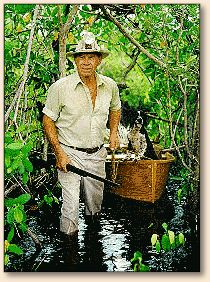 This trip I wanted to drive the small island of Chokoloskee
and visit the places where Mr. Watson bought his supplies.
Where Loren "Totch" Brown walked the shell paths as a kid
as his family settled into a simple life of fishing, trapping
and eking out enough to survive on. I bought Totch's book
one year prior to his death in May of '96. I had hoped to
bring it with me and sit with him as he signed, Totch,
A Life in the Everglades, and listen to his tales of
the old Everglades, before multi-seated airboats hauled
pointing tourists with cameras strapped to their necks;
times before groups of yellow, red and blue kayaks carried
wobbling visitors into the back-country to see the gators
Totch used to poach. But only the quiet sounds of Totch's
ghost remained on the island.
This trip I wanted to drive the small island of Chokoloskee
and visit the places where Mr. Watson bought his supplies.
Where Loren "Totch" Brown walked the shell paths as a kid
as his family settled into a simple life of fishing, trapping
and eking out enough to survive on. I bought Totch's book
one year prior to his death in May of '96. I had hoped to
bring it with me and sit with him as he signed, Totch,
A Life in the Everglades, and listen to his tales of
the old Everglades, before multi-seated airboats hauled
pointing tourists with cameras strapped to their necks;
times before groups of yellow, red and blue kayaks carried
wobbling visitors into the back-country to see the gators
Totch used to poach. But only the quiet sounds of Totch's
ghost remained on the island.
But what about Mr.Watson? Was there anyone left here to tell
of the murder and mayhem he left behind before the townsfolk
jointly ambushed him over at Ted Smallwood's Trading Post.
Totch wrote about it, but Peter Matthiessen wrote even more
in his book, Killing Mister Watson.

Smallwood's store is still there on the island, and has now been turned
into a museum by his granddaughter. Watson lived on Chatham
River, and terrorized the residents when he came puttering
to town in his skiff. Tiring of the monster, the folks shot
and killed him out between the old boat docks and Smallwood's
place.
 Fishing on this trip was taking backstage, even though we
managed to get out everyday. As I said, there's a definite
ritual Jim and I established from the first day he introduced
me to Chokoloskee, Florida.
Fishing on this trip was taking backstage, even though we
managed to get out everyday. As I said, there's a definite
ritual Jim and I established from the first day he introduced
me to Chokoloskee, Florida.

Mullet are plentiful down there. Reason being, it's a Federal
Park, and no commercial fishing is allowed in the Everglades
National Park. Ernest F. Coe saw to that. He was known as the
"Father of the Everglades."
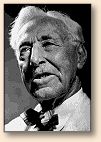 In 1928 Ernest F. Coe wrote Stephen T. Mather, first Director
of the National Park Service, outlining a proposal for a
national park to be located within the lower everglades of
south Florida. A subsequent meeting took place and from this
meeting legislation to create Everglades National Park was
introduced by Senator Duncan B. Fletcher of Florida, in
December of 1928. This legislation was approved May 25,
1934 and was signed by President Roosevelt on May 30, 1934.
It took another thirteen years to acquire the land and define
the boundaries of the new park.
In 1928 Ernest F. Coe wrote Stephen T. Mather, first Director
of the National Park Service, outlining a proposal for a
national park to be located within the lower everglades of
south Florida. A subsequent meeting took place and from this
meeting legislation to create Everglades National Park was
introduced by Senator Duncan B. Fletcher of Florida, in
December of 1928. This legislation was approved May 25,
1934 and was signed by President Roosevelt on May 30, 1934.
It took another thirteen years to acquire the land and define
the boundaries of the new park.
As I was saying, mullet roam the saltwater estuary in huge
schools. Mullet are usually considered only baitfish by some,
and dang fine ones at that. However, to most Florida natives,
it's been a staple of our diets for many years. Fried, smoked,
even salt-mullet that came in small, wooden boxes when I was
a kid, the mullet is a delicious fish if cooked fresh, or soaked
to remove the salt. Jim and I always netted a few large, black
mullet the first day on the flats to take back to camp for a
fried mullet dinner that night. Fried mullet, hushpuppies with
lots of green onions, grits and Jim's camp beans, it just doesn't
get any better!

They say, "When the Poinciana trees are blooming, the snook
are biting." This holds true in May. These magnificent canopied
trees are in their full regalia in late spring with their
flamboyant, red-orange plumage, contrasting brilliantly
against a resplendent white ribbon of sand along certain
keys where they shade crunchy, shelled beaches.
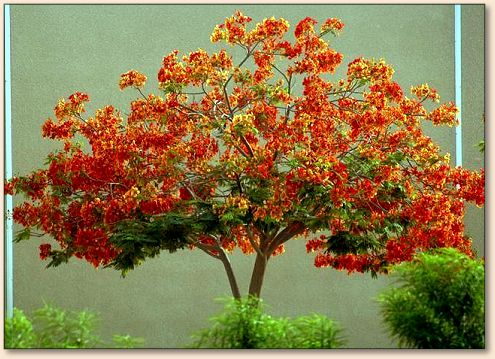
Nothing seems as tranquil as poling the skiff in the emerald waters
at the edge of the Gulf, where the fire of the Royal Poinciana
reflects into the water-color surface. That is until the
snook blasts from the film to feed upon the fly that has
been presented to her, usually catching the angler by
surprise, and causing the most seasoned of fish chasers
to almost jump out of their skin.

With almost as much color as the Poinciana, the small and
large keys were given names by locals, or even further back,
the Native Americans. Plover, Jack Daniels, Fakahatchee,
Lumber, Buzzard, Turkey and Mormon, just to name a handful.
Rivers flow into the Gulf of Mexico from their headwaters
deep within the freshwater expanses that begin easterly
from Lake Okeechobee and the cypress heads and sawgrass
flats, growing larger and larger until they pour into the
salty waters bearing names of Chatham, Rogers, Huston, and
Lostman's. Back-country bays chained together by narrow
paths of brackish waters, overgrown with the red and black
mangroves, feed these bays named Sunday, Oyster, Canon,
Alligator and many more. Bays where "no-see-ems," deer flies,
horse flies and mosquitoes dine on one's blood unless covered
by long-sleeved shirts, long pants and plenty of mosquito
"dope." Totch Brown refers to the "skeeters" as "Swamp Angels."
Still, God's Country to those that love "El Laguno del Espiritu
Santo."
While wading or poling the outer edges of the keys, small,
black-tip sharks can be seen and caught, as they patrol the
knee-deep waters. Tarpon of triple-digit proportions fin
within twenty feet of the skiff, then turn and crash schools
of bait, or light-weight tippets rigged for twenty-pound
snook, not one hundred and fifty pound beasts, causing
the reel to angrily scream in protest, and the angler to
come near of passing out, fearing the loss of an expensive
fly-line, and the explosion of pure adrenaline throughout
his every cell. Coquina-rocked shores holding red fish,
and the tips of the keys, where greenish flats of eel
grass begin and run long ways out, hold large and fat
speckled trout, call to the fishers that are fortunate
to know this place.

Back in the towns of Chokoloskee and Everglades City, a
few scattered and rustic bars/restaurants stand along the
endings of Highway 29, decked out in tropical colors, or
worn clapboard siding, almost bare of paint. Stilt houses
rise twelve feet above the low land of the island of
Chokoloskee.
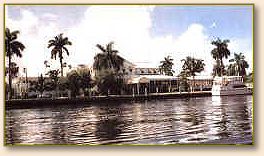 The Rod and Gun Club in Everglades City, with its
sterile-white siding, still serves its visitors well.
In 1922 Barron G. Collier, a banker and railroad man,
bought almost all of southwest Florida, including The
Rod and Gun Club. Presidents Roosevelt, Truman, Eisenhower,
Hoover and Nixon were guests at one time, or another. The
likes of John Wayne and "Papa" Hemingway were known to
darken the doorway of the Club. I've been there once
myself, and dined on some of the best fried chicken I
have ever tasted, and drank rum on the back porch
overlooking the Barron River. I just got off the phone
with Pat Bowen, the current owner of "the old gal" as
she affectionately referred to the Rod and Gun Club,
and to just spend the few moments with her, I could
tell in her voice the love she has for the 'Glades
and the beautiful, "old gal'. But as we spoke, we,
two Florida natives, agreed things are a changin'.
The Rod and Gun Club in Everglades City, with its
sterile-white siding, still serves its visitors well.
In 1922 Barron G. Collier, a banker and railroad man,
bought almost all of southwest Florida, including The
Rod and Gun Club. Presidents Roosevelt, Truman, Eisenhower,
Hoover and Nixon were guests at one time, or another. The
likes of John Wayne and "Papa" Hemingway were known to
darken the doorway of the Club. I've been there once
myself, and dined on some of the best fried chicken I
have ever tasted, and drank rum on the back porch
overlooking the Barron River. I just got off the phone
with Pat Bowen, the current owner of "the old gal" as
she affectionately referred to the Rod and Gun Club,
and to just spend the few moments with her, I could
tell in her voice the love she has for the 'Glades
and the beautiful, "old gal'. But as we spoke, we,
two Florida natives, agreed things are a changin'.

New development, GPS units, Florida based fishing
magazines that publish monthly articles that include
the coordinates for the GPS units, the now crowded
boat ramps, have forever changed the area. Don't get
me wrong, the back-country still remains almost the
same, but where we used to see two or three boats in
a week-long trip, we now see dozens. I told Pat that
I honestly do believe that when Totch Brown passed to
the other side, my part of the romance and mystery of
the area passed with him.

I may return to the area one of these days, but for
now, I'd like to remember "El Laguno del Espiritu Santo"
the way it was only a few years back.
'Til next time. ~ Capt. Gary
About Gary:
Gary grew up in central Florida and spent much
of his youth fishing the lakes that dot the area.
After moving a little closer to the coast, his
interests changed from fresh to salt. Gary still
visits his "roots" in the "lake behind the house."
He obtained his captain's license in the early '90's
and fished the blue waters of the Atlantic for a little
over twelve years. His interests in the beautiful shallow
water flats in and around the famous Mosquito Lagoon came
around twenty-five years ago. Even though Captain Gary
doesn't professionally guide anymore, his respect of the
waters will ever be present.
Gary began fly fishing and tying mostly saltwater
patterns in the early '90's and has participated as
a demo fly tier for the Federation of Fly Fishers
on numerous occasions. He is a private fly casting
and tying instructor and stained glass artist,
creating mostly saltwater game fish in glass.
|
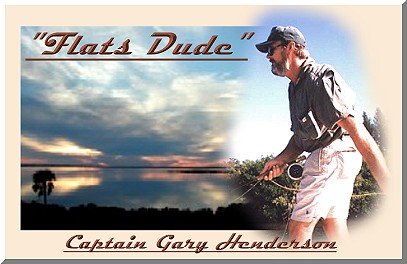

















 This trip I wanted to drive the small island of Chokoloskee
and visit the places where Mr. Watson bought his supplies.
Where Loren "Totch" Brown walked the shell paths as a kid
as his family settled into a simple life of fishing, trapping
and eking out enough to survive on. I bought Totch's book
one year prior to his death in May of '96. I had hoped to
bring it with me and sit with him as he signed, Totch,
A Life in the Everglades, and listen to his tales of
the old Everglades, before multi-seated airboats hauled
pointing tourists with cameras strapped to their necks;
times before groups of yellow, red and blue kayaks carried
wobbling visitors into the back-country to see the gators
Totch used to poach. But only the quiet sounds of Totch's
ghost remained on the island.
This trip I wanted to drive the small island of Chokoloskee
and visit the places where Mr. Watson bought his supplies.
Where Loren "Totch" Brown walked the shell paths as a kid
as his family settled into a simple life of fishing, trapping
and eking out enough to survive on. I bought Totch's book
one year prior to his death in May of '96. I had hoped to
bring it with me and sit with him as he signed, Totch,
A Life in the Everglades, and listen to his tales of
the old Everglades, before multi-seated airboats hauled
pointing tourists with cameras strapped to their necks;
times before groups of yellow, red and blue kayaks carried
wobbling visitors into the back-country to see the gators
Totch used to poach. But only the quiet sounds of Totch's
ghost remained on the island. In 1928 Ernest F. Coe wrote Stephen T. Mather, first Director
of the National Park Service, outlining a proposal for a
national park to be located within the lower everglades of
south Florida. A subsequent meeting took place and from this
meeting legislation to create Everglades National Park was
introduced by Senator Duncan B. Fletcher of Florida, in
December of 1928. This legislation was approved May 25,
1934 and was signed by President Roosevelt on May 30, 1934.
It took another thirteen years to acquire the land and define
the boundaries of the new park.
In 1928 Ernest F. Coe wrote Stephen T. Mather, first Director
of the National Park Service, outlining a proposal for a
national park to be located within the lower everglades of
south Florida. A subsequent meeting took place and from this
meeting legislation to create Everglades National Park was
introduced by Senator Duncan B. Fletcher of Florida, in
December of 1928. This legislation was approved May 25,
1934 and was signed by President Roosevelt on May 30, 1934.
It took another thirteen years to acquire the land and define
the boundaries of the new park. The Rod and Gun Club in Everglades City, with its
sterile-white siding, still serves its visitors well.
In 1922 Barron G. Collier, a banker and railroad man,
bought almost all of southwest Florida, including The
Rod and Gun Club. Presidents Roosevelt, Truman, Eisenhower,
Hoover and Nixon were guests at one time, or another. The
likes of John Wayne and "Papa" Hemingway were known to
darken the doorway of the Club. I've been there once
myself, and dined on some of the best fried chicken I
have ever tasted, and drank rum on the back porch
overlooking the Barron River. I just got off the phone
with Pat Bowen, the current owner of "the old gal" as
she affectionately referred to the Rod and Gun Club,
and to just spend the few moments with her, I could
tell in her voice the love she has for the 'Glades
and the beautiful, "old gal'. But as we spoke, we,
two Florida natives, agreed things are a changin'.
The Rod and Gun Club in Everglades City, with its
sterile-white siding, still serves its visitors well.
In 1922 Barron G. Collier, a banker and railroad man,
bought almost all of southwest Florida, including The
Rod and Gun Club. Presidents Roosevelt, Truman, Eisenhower,
Hoover and Nixon were guests at one time, or another. The
likes of John Wayne and "Papa" Hemingway were known to
darken the doorway of the Club. I've been there once
myself, and dined on some of the best fried chicken I
have ever tasted, and drank rum on the back porch
overlooking the Barron River. I just got off the phone
with Pat Bowen, the current owner of "the old gal" as
she affectionately referred to the Rod and Gun Club,
and to just spend the few moments with her, I could
tell in her voice the love she has for the 'Glades
and the beautiful, "old gal'. But as we spoke, we,
two Florida natives, agreed things are a changin'.